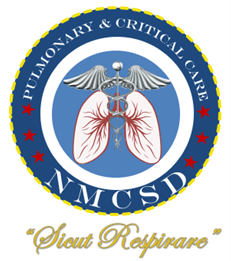SCRIPPS SLEEP MEDICINE
- Rotation Director: Shazia Jamil, MD
- Rotation Location: Scripps Green, La Jolla, CA
- Rotation Duration: One 4-week block
- Trainees/month: One
Educational Purpose and Rotation Description:
The Sleep Medicine rotation is designed to provide the fellow with opportunity to learn both the technological and clinical aspects of Sleep Medicine. This will be accomplished through active participation in ordering and interpreting sleep studies, as well as the clinical evaluation and management of patients with sleep disorders. The patient mix will include male and female patients ranging from young adults to the elderly with a variety of sleep complaints including sleep disordered breathing, hypersomnia, insomnia, and abnormal sleep behaviors. The fellow will review sleep studies each morning in the sleep laboratory and will then see patients referred for sleep evaluation in the clinic proctored by the attending physician.
Rotation Objectives:
- Acquire knowledge of and clinical experience in:
- Normal sleep physiology
- Sleep physiology changes with aging
- Sleep staging
- How to take a sleep history
- Sleep-disordered breathing
- Effects of sleep-disordered breathing on physical, cognitive, emotional, and social functioning
- Diagnostic methods and criteria for sleep disorders
- Treatment of sleep disorders
- Acquire knowledge (indications, contraindications, complications, and limitations) of and competence in sleep medicine technology and procedures:
- Polysomnography
- Multiple sleep latency testing
- Maintenance of wakefulness testing
- Nasal CPAP titration
- Nasal BIPAP titration
- Actigraphy
- Home cardiopulmonary studies
- Gain experience in:
- Evaluation of adult patients with sleep complaints
- Appropriate use of diagnostic sleep studies
- Use of positive airway pressure (CPAP and BIPAP) to treat sleep disordered breathing
- Appropriate use of commonly used “sleep” medications including hypnotics and CNS stimulants
- Comprehensive management of patients with sleep disorders
- Communication with physicians, technicians, patients, and home health companies involved in the care of patients with sleep disorders
- Management of the sleep lab to include scheduling, performing studies, training technicians, and appropriate follow-up
Learning Venues and Teaching Methods:
Conferences (refer to schedule)
Direct Patient Care:
- Scripps Green Sleep Clinic and Laboratory)
- Pulmonary Clinic, 3rd floor, building 3 (sleep clinic)
Reading Material:
- Sleep Syllabus, provided (assigned)
- Rechtschaffen A, Kales A (ed). A manual of standardized terminology, techniques and scoring system for sleep stages of human subjects. Brain information service/Brain research institute. University of California Los Angeles. 1968 (assigned)
- Carskadon M, Dement W, Mitler M. Guidelines for the Multiple Sleep Latency Test (MSLT): A standard measure of sleepiness. Sleep 1986;9(4):519-524. (assigned)
- Polysomnography Task Force, Chesson AL, Chairman, American Sleep Disorders Association. The indications for polysomnography and related procedures. Sleep 1997;20:423-487 (assigned)
- Principles and Practice of Sleep Medicine, third edition, 2001, Edited by Meir Kryger, W.B. Saunders and Company (suggested)
- The International Classification of Sleep Disorders, 1997
Evaluation:
The trainee will receive a written evaluation at the end of their rotation based on cognitive, patient management, procedural and humanistic skills. This evaluation, including areas for improvement, will be discussed personally with the trainee at the end of the rotation and then forwarded to the Program Director for inclusion in the trainee’s permanent file.
